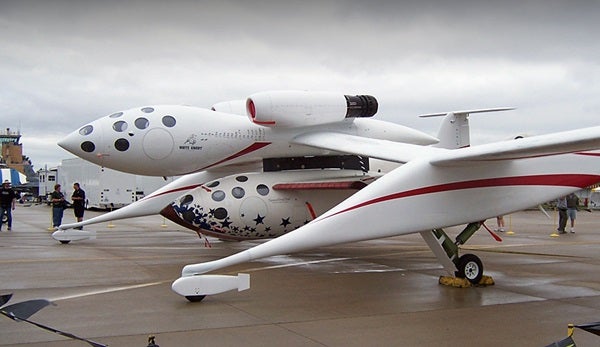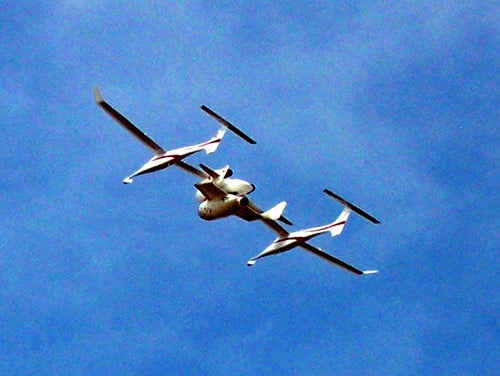Renowned aircraft and spaceship designer Burt Rutan predicts orbital flight will be available for everyone in a few decades. He spoke July 29 at the annual AirVenture sponsored by the Experimental Aircraft Association in Oshkosh, Wisconsin.
“Fifteen years from now, every kid will know that, if he wants to go into orbit in his lifetime, he can do that,” says Rutan, who designed SpaceShipOne, the first civilian vehicle to carry a pilot into space. That was a suborbital flight, which is much safer than orbital missions.
Rutan says the next step in civilian space efforts is to make orbital flight as safe as scheduled airlines were when they began operations in the 1920s. Back then, the chance of a passenger being killed on an airline flight was 1 in 6,000. That rate was 100 times safer than orbital flight is today, Rutan declares.
The immediate goal of Rutan’s company, Scaled Composites, is to develop a program that gives civilians the opportunity to fly into space on suborbital missions. He believes enough companies will enter this market to allow 100,000 people to leave Earth’s atmosphere in some 12 years of such flights.
The spaceship designer says recreation will be one of the major driving forces behind civilian space travel. “I’m predicting we’ll have a decade to a decade and a half of fun flying to space,” he says. “For the very first time, relatively soon, you’ll be able to buy a ticket and go faster than the fastest military fighter.” He says that experience will spur advanced space-travel developments. “You’ll see operational military aircraft going in and out of the atmosphere,” he adds.
Rutan blasted NASA for wasting more than 30 years with little development of manned space flight. “I call what happened in ’73 a collapse,” he says, citing what he calls America’s abandonment of lunar travel and the search for safe space flight. He praised the glory days of landing on the Moon. “The courage to make a decision is the reason we succeeded, and the reason we fail now.” He adds, “It was good that America lost on Sputnik. It was good that we lost on having the first man in space. That would’ve felt like a great accomplishment and JFK wouldn’t have pushed for a Moon mission.”
Rutan was inspired to design spaceships by some of his experiences as a child. “Mars was a hell of a lot more interesting in 1955 than it is now,” he says. “There was still debate over canals and vegetation.” Tongue-in-cheek, he adds, “NASA screwed it up by sending those robots [to Mars] and only landing in deserts, instead of downtown.”











